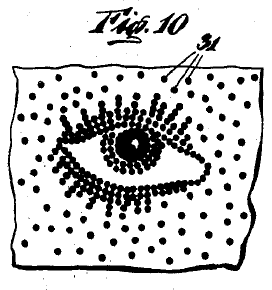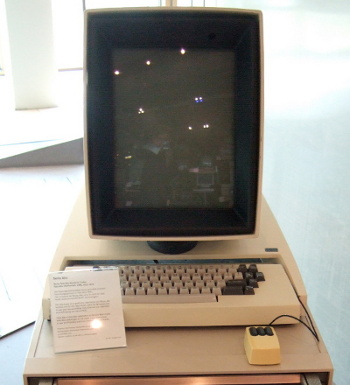| Tikalon Blog is now in archive mode.
An easily printed and saved version of this article, and a link
to a directory of all articles, can be found below: |
|
This article |
| Directory of all articles |
PARC Turns Forty
September 28, 2010
There was a golden age of
industrial research when both the scientists who occupied the industrial laboratories and their sponsors were happy. The scientists were happy because, like baseball players, they were being paid well for what they enjoyed doing. The companies that hired them were happy because every once in a while those scientists would hit a home run and make their company a lot of money. The prime example of this is
Bell Labs, but not much farther down the list is the
Xerox Palo Alto Research Center (PARC). Xerox PARC was founded in 1970, so it celebrates its fortieth anniversary this year.
Xerox, of course, owes its existence to the research of
Chester Carlson, an American
physicist. Carlson earned a BS in physics from the
California Institute of Technology in 1930, a time that unfortunately coincided with the start of the
Great Depression, so he couldn't find a job in physics. He ended up working as an
engineer for
Bell Telephone Laboratories in
New York City. He didn't like the work, so he transferred to their
patent department as an assistant to a patent attorney. All the time, Carlson was keeping a personal notebook with ideas for inventions, and his experience in the patent department was likely a good education on what inventions were patentable and marketable. A few years later he ended up working for
P. R. Mallory and Company, an electronics company, and he became head of their patent department. While working there, he attended law school at night, and he received an
LL.B. degree in 1939.[1]
Carlson's experiences in patent departments and as a student convinced him that what the world needed was a convenient copy machine. Carlson decided very early that he would try something different than the chemical copy technique used at the time, which was just a variation of
photography. He experimented at home with various materials, and his physics background allowed him to research non-chemical techniques, one of which was first investigated by the
Hungarian,
Pál Selényi. Selényi had printed images by using an
ion beam to charge regions of an
insulator that he subsequently dusted with a powder. The powder stuck to the charged regions. Carlson decided to try this process by
electrostatically charging the entire surface of a
photosensitive insulator, then bleeding off the charge using light. With the help of an assistant, Otto Kornei, he succeeded in forming an image on a
sulfur-coated
zinc plate and transferring it to paper on October 22, 1938. Carlson's basic patent on this technique was issued on October 6, 1942.[2] The rest, as they say, is history. Carlson is another example of how physics research can have tremendous financial rewards for the people who sponsor it.

Fig. 10 from Carlson's Patent.
PARC was intentionally set at a very remote location from the
Rochester, New York, Headquarters of Xerox. Even in those days, research directors understood that too much interference from corporate management was bad for long-term research. The principle seemed to work, since there's a long list of innovations that sprang from PARC. Here are just a few.[3]
![]()
• 1971 -
Laser printing. This was an inevitable invention for Xerox, since it was a modified
Xerography process.
• 1972 - The
Smalltalk language, which incorporated
object-oriented programming. I showed a colleague of mine the source code for a Smalltalk implementation in
Pascal in the early 1980s. He tried to get it to work on a
VAX computer, but he didn't succeed.
• 1973 - The
Alto computer, which was the first with a
graphical user interface and a
What-You-See-Is-What-You-Get text editor. Over the course of the next few years, PARC programmers added icons, windows and pop-up menus. This was the start of developments that gave you the computer on which you're reading this article.
• 1975 -
Ethernet.
• 1980 -
Magneto-optical disk drives.
• 1982 - The
fiberoptic local area network (LAN).
• 1987 - The
unicode character coding system. The sixteen bit character coding was a necessary innovation for "
The Document Company".
• 1988 - Prototype mobile computing devices, such as a tablet computer.
• 2000 -
Electronic paper.

A Xerox Alto terminal.
PARC was spun-off from Xerox as a
wholly-owned subsidiary in 2002. This allowed it to do work for other corporations. Today, it employs about 170 scientists and about half again that number as support staff.[4]
As the timeline indicates, PARC developed a lot of
intellectual property relating to the graphical computing environments we all know and love. Xerox, however, didn't fully commercialize most of it, and it was left to others to bring these technologies to market. Many commentators believe that
Apple owes its good fortunes to its early contacts with PARC. That's a very involved and controversial topic that I won't address, aside from mentioning that at the same time
Apple was suing Microsoft for intellectual property relating to graphical user interfaces,
Xerox tried to sue Apple for the same thing.
![]()
References:
- Chester Carlson Biography Page on Wikipedia.
- Chester F. Carlson, "electrophotography," US Patent No. 2,297,691 (October, 1942).
- Todd R. Weiss, "Timeline: PARC milestones,"Computerworld, September 20, 2010.
- Todd R. Weiss, "Xerox PARC turns 40: Marking four decades of tech innovations," Computerworld, September 20, 2010.
Permanent Link to this article
Linked Keywords: Industrial research; Bell Labs; Xerox Palo Alto Research Center; Xerox; Chester Carlson; physicist; California Institute of Technology; Great Depression; engineer; Bell Telephone Laboratories; New York City; patent; P. R. Mallory and Company; LL.B. degree; photography; Hungarian; Pál Selényi; ion beam; insulator; electrostatically; photosensitive; sulfur; zinc; Rochester, New York; Laser printing; Xerography; Smalltalk; object-oriented programming; Pascal; VAX; Alto; graphical user interface; What-You-See-Is-What-You-Get; Ethernet; Magneto-optical disk drives; fiberoptic; local area network; unicode; The Document Company; Electronic paper; wholly-owned subsidiary; intellectual property; Apple; Apple Computer, Inc. vs. Microsoft Corporation.